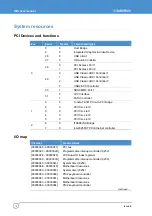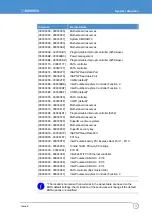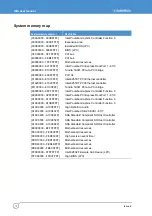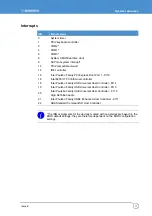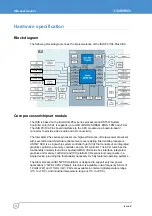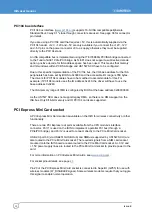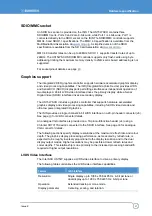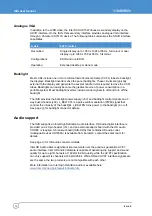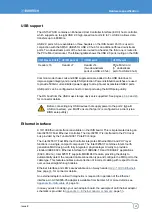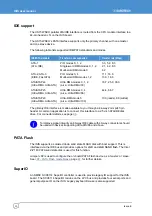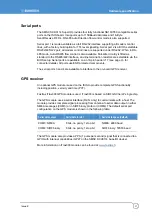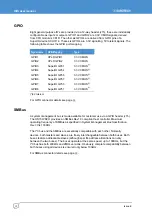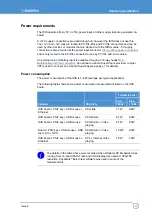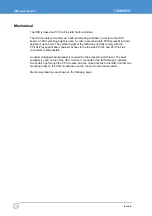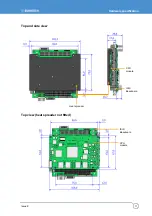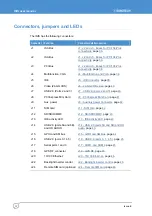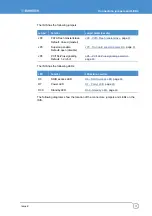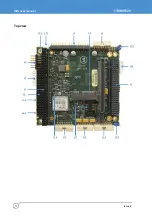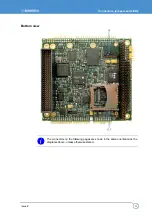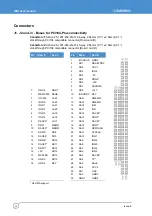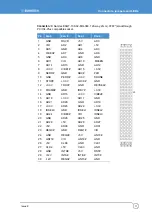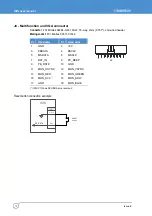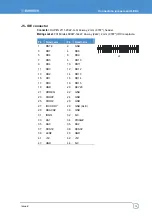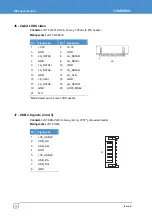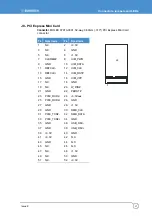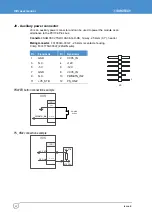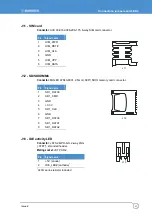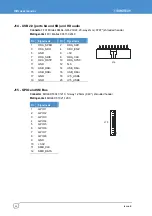
Hardware specification
Issue E
29
Power requirements
The ISIS operates from +5V (+/-5%) power input. All other supply rails are generated on-
board.
A +12V supply connection is provided through J9, however the ISIS does not use this.
The +12V and –12V rails are routed to PC/104-Plus and PC/104 connectors and can be
used by other devices or modules that are stacked onto the ISIS module. -5V supply
connection is also provided at the power input connector (
J9 - Auxiliary power connector
and is only routed to the PC/104 connector for use by PC/104 add-on modules.
An external coin cell battery input is available through an 18-way header (
Multifunction and VGA connector
). An optional on-board SuperCap is provided. Jumper
JP3 is used to connect an on-board SuperCap (see page
for details).
Power consumption
The power consumption of the ISIS is 7–8W (average per typical application).
The following table shows some power consumption measurements taken on the ISIS
board.
Total board power
Hardware
OS/Activity
Atom
1.6GHz
Atom
1.1GHz
ISIS board + PS/2 key + USB mouse +
Ethernet
XPe/ Idle
7.1W
6.6W
ISIS board + PS/2 key + USB mouse
XPe/BurnIn
8.7W
8.0W
ISIS board + PS/2 key + USB mouse
XPe/ Video
playing
8.7W 8.0W
Board + PS/2 key + USB mouse + USB
test + Eth + GPS
XPe/ Video
playing
10.4W 9.0W
ISIS board + PS/2 key + USB mouse +
Ethernet
XPe + Internet Video
playing
7.8W 7.0W
The details in the table above were recorded when Windows XP Embedded was
running from on-board PATA Flash and VGA display was used at 1024x768
resolution. PassMark
®
BurnIn test software was used in some of the
measurements.


